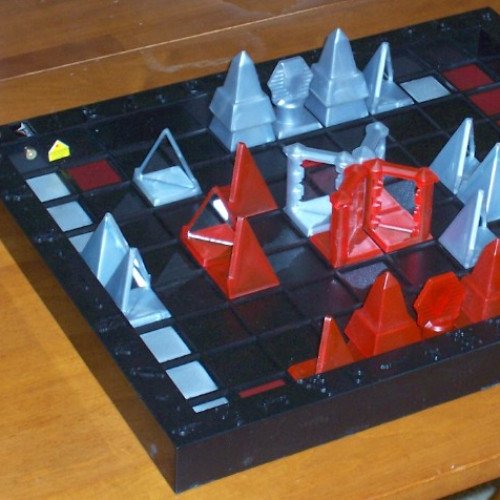BUL VS KHET

BUL
Bul (also called Buul, Boolik or Puluc) is a running-fight board game originating in Mesoamerica, and is known particularly among several of the Maya peoples of Belize and the Guatemalan highlands. It is uncertain whether this game dates back to the pre-Columbian Maya civilization, or whether it developed in the post-colonial era after the arrival of the Spanish conquistadores. Stewart Culin described the game in the 24th Annual Report of the Bureau of American Ethnology: Games of North American Indians published in 1907. R. C. Bell referred to the game in Board and Table Games from Many Civilizations. Both of these descriptions were based on the eyewitness accounts of others. Lieve Verbeeck, a linguist studying Mayan language, witnessed the modern version of the game being played by Mopan and Kekchi Maya in Belize It is not known exactly when the game was developed or what the original rules were as very few records survived the invasion by the conquistadors between the 15th and 17th centuries. Stewart Culin organised the games in his anthology into those he thought had an influence from Europe in their creation. Bul is not listed among these, and in his opinion the game must have developed before Europeans arrived in Central America. There are a variety of ways to play the game, as Verbeeck's account shows. The game could be played by two people, or by two equal-sized teams. The overall objective is to capture and subsequently kill the playing pieces of the opposition, so the game is in essence a war game. The playing area is divided into equal spaces using rods placed parallel to each other. The two players have control of a base at either end of the play area. The players take an even number of stones or figurines (or any suitable playing piece) and place them in their respective bases.
Statistics for this Xoptio

KHET
Khet is a chess-like abstract strategy board game using lasers that was formerly known as Deflexion. Players take turns moving Egyptian-themed pieces around the playing field, firing their low-powered laser diode after each move. Most of the pieces are mirrored on one or more sides, allowing the players to alter the path of the laser through the playing field. When a piece is struck by a laser on a non-mirrored side, it is eliminated from the game. Under its original name, the game was a Mensa Select Award winner. Its name was changed on September 15, 2006. The new game retains the same rules of gameplay, but has a different design, including a new color scheme and a new box design. Under the new name, the game was one of five finalists for the 2007 Toy of the Year award. Professor Michael Larson and two students, Del Segura and Luke Hooper, designed the game as a class project at Tulane University. (Professor Larson is now at the University of Colorado.) The game was introduced to the public in the spring of 2005, and was first brought to prominence at the New York Toy Fair of that year. The game was first shipped in October 2005. The first Deflexion World Championship was held December 10, 2005 under the dome at the Massachusetts Institute of Technology. Registration was free, and the participants competed for cash and other prizes. The winner was an MIT student. Under the new name, Khet, the first Regional Championship took place in April 2006 at the famous Café du Monde in the New Orleans French Quarter. Twenty-four participants competed for a number of prizes. As a special bonus, the Eye of Horus beam splitter was unveiled at the very end, and used by each player in the championship game. Khet was also featured on a recent episode of the HGTV show "I Want That: Tech Toys". Footage from the New Orleans tournament was included in the broadcast. In 2017 a company called "Thinkfun" acquired the license for the now out of print Khet 2.0 and rebranded the game "Laser Chess". Now with a new, modernized scifi look, it brings the exact same rules and feel of Khet 2.0 back to the table.